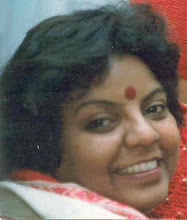

Bad girls Good guys
Men make for better woman or so they would have us believe, says Nirupama Dutt in an overview of the female impersonators
When I stepped onto the stage as Rahila in Yahudi ki Ladhki, the audience just wondered how come a girl in this company? This was my first taste of success. I still remember the day. I used to wear a brocade salwar and a jumper. And my hair were done in two long plaits.'' Recalling his girlie days thus is Master Fida Husain Nursee, a century-old veteran of Parsi theatre, now living in Moradabad. He had begun his acting career as a female impersonator with Alfred New Theatre Company.
Although theatre tradition dates back to Sanskrit drama, yet various invasions and colonization destroyed it. Performing arts came to be associated only with `women of ill fame'. Indian cities saw the rebirth of theatre inspired by the West in the 1830s and it became fashionable with the educated strata. Two prominent names of this theatre were legendary stars, Balgandharva of Marathi stage and Jai Shankar Sundri of Gujrati stage. The Sangeet Natak Akademi awards to them in the sixties were for their days as women.
The success of Kamalahasan as Chachi 420 is peanuts before the glory Balgandharva enjoyed in his hey days. He set the fashions in clothes or hairstyles for women at the turn of the century. He appeared in advertisements for women's cosmetics and his singing talents earned him the title of Nightingale of Maharashtra. ``Balgandharva and Sundri set the behaviour mode for the literate urban Indian woman before she came into the open in the freedom struggle as the Bharatiye Nari,'' says Katherine Hensen, a Canadian scholar who is researching the role of the female impersonator in Indian theatre.
``The image he gave to women was a sweet Victorian one: the pativrata who would do anything for her husband. Mothers would say they wanted a daughter-in-law just like the women Balgandharva played. His talent was such that he acted out the image with conviction. A man playing a woman is very challenging for it is a part of the process of translating reality into art,'' says theatre director Amal Allana.
Allana studied the life and times of the legendary actor at length for her plays Himmat Mai and Begum Barve. Manohar Singh played the woman in the former and a man wanting to be a woman in the latter. Begum Barve is a play inspired by the life of Balgandharva. It was a rare performance by Manohar as the Begum. While Balgandharva gave an image to women, Manohar succeeded in shattering this conditioned image of womanhood in a play.
The 20th Century had gone a couple of decades and more before the entry of women started in Parsi theatre. There was a lot of resistance from the directors of theatre companies and the actors. Reasons? Stage was not the place for `respectable' women. In fact an early adventurous girl called Sabz Pari who stepped onto the stage as early as 1870 met with a sad fate. She was abducted the very first night of the show and never heard of again. Hear what old Nursee has to say, ``The entry of girls to our company was very late hence it was considered respectable. Moti lal and Madan Mohan Malviya used to come to watch our performances.''
Though a direct fallout of the colonial era, the proscenium theatre did not follow all the rules of the Victorian theatre. There the `bad' girls were put onto the stage but here they were kept away for long by the goodie-good guys. It also became a means to control women's lives by laying the rules: thus far and no more. Something which commercial cinema carried on even with women as women. It was also a way of denying women their creative space. In arts and crafts, the skills were appropriated by men and women reduced to domestic drudgery.
The daring act by Sabz Pri did not go in vain and slowly women came onto the stage. The first to come were the singing girls. In fact Balgandharva fell in love with one of them. Goharbai became his lady love in real life. Open Sesame and women from `respectable' homes were there in the forbidden arena. Nursee, however said: ``What Balgandharva and Jai Shankar Sundri achieved, no woman has been able to.'' A conviction that comes perhaps from male-to-male dynamics.
AN EXCEPTION
In Maharashtra breathed in the glory of female impersonators, Bengal had already seen the blossoming of an actress in the 19th Century. She was Nati Binodini (1863-1941). The English Press described her as the `prima donna of Bengali theatre' and `the flower of the native stage.' Like most actresses of her time she came from the red light areas of North Calcutta. She was trained by the legendary dramatist Girish Chandra Ghosh from the age of 11.
Binodini rose like a meteor in her career spanning 12 years. Novelist Bankim Chandra Chatterjee acknowledged her genius and it is said theosophist Ramakrishna Paramhamsa went into a trance seeing her performance in Chaitanya Leela. However, exploited and tormented in a male-dominated society, she quit theatre at the age of 24 when she was at the height of fame.
After that she would come to the theatre as a viewer: watching from the wings. Her literary works Amar Katha and Amar Abhinetri Jivan are valuable documents on theatre in Bengal in those days. Theatre director Bapi Bose who directed a play, written by Chitranjan Ghosh, on Binodini's struggle as an actress describes her as `the first martyr of Indian theatre.'
